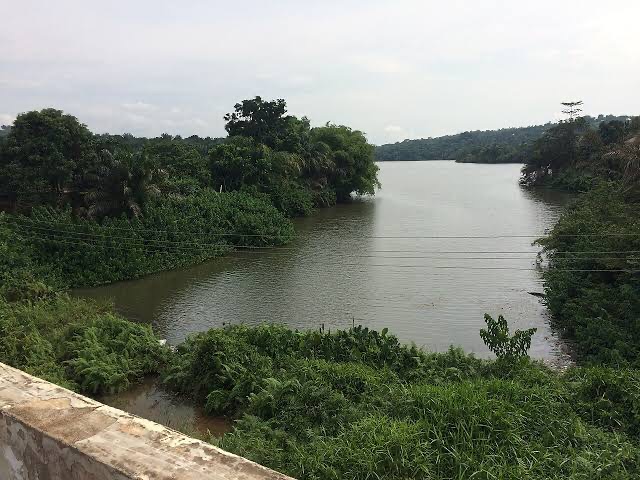The name “Ọmambala” comes from an ancient goddess whose river journeyed from the underworld to Anam and Onicha. Apparently, people of the area formerly used the term Omambala to refer to the area that is now in Anambra, parts of Kogi, Enugu, and Ebonyi states.
The name “Anambra” is an anglicized version of “Ọmambala”. British colonialists and early European missionaries, who found the Igbo language difficult to pronounce, gradually modified “Ọmambala” to “Anambra” – a name which was later adopted as the official name of the State. In Anambra for instance, the Anam Community is a mega community of eight villages in Anambra State, bordered by the Ọmambala River, River Niger, and River Ezichi.
The Ọmambala River often referred to as the Anambra River, is one of the most significant rivers in South-Eastern Nigeria. It is a major tributary of the River Niger one of Africa’s largest rivers. It originates from the northern part of Anambra State, flowing through several communities before emptying into the River Niger at Onitsha. The Ọmambala River plays a crucial role in the socio-economic and cultural life of the people of Anambra State, serving as an important waterway, providing water for agriculture, fishing, and transportation. The river’s name – Ọmambala; was eventually anglicized to “Anambra,” which became the official name of the state when it was created in 1991.
Although it’s exact length varies in records, it is estimated to flow for about 210 kilometers (130 miles) into the River Niger, making it one of the longest rivers in the region. The Ọmambala River flows southward into Anambra State and empties into the River Niger near Onitsha, cutting across several local government areas and communities.
The Ọmambala River Basin supports vast rice farms in Ayamelum, Anambra East, and Anambra West local government areas of the State. Farmers along the river grow cassava, yam, maize, and vegetables, benefiting from the nutrient-rich floodplains. The Ọmambala river is home to various species of fish, providing food and income as local fishermen in communities like Aguleri, Umueri, and Anam depend on fishing as a primary economic activity.
Historically, the river was used as a trade route, allowing goods to be transported via canoes and boats before the advent of modern roads; till today, people use the river for local transportation between riverine communities. While the river does not directly pass through Onitsha, it merges into the river Niger near Onitsha, making it historically significant for trade and commerce. Also, communities in the area celebrate festivals and perform traditional rites connected to the river, which is sometimes regarded as a spiritual entity.
The Ọmambala River is not just a physical landmark but remains a vital part of Anambra State’s heritage, economy, and identity. Its influence extends to the state’s name, economic activities, and traditional heritage. While the river continues to support thousands of people through farming, fishing, and trade; efforts should be made to address environmental challenges (especially flooding)and ensure sustainable use of this natural resource.
written by
ANOWAI UZONDU NZUBECHUKWU.



1 comment
Nice work